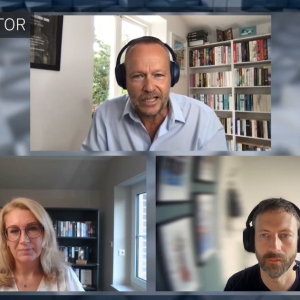Hyperion develops a broad portfolio of business intelligence (BI) tools, including the market-leading online analytics processing (OLAP) server Essbase, and its specialist corporate performance management (CPM) analytics applications (including consolidation, budgeting, planning, and forecasting).
Notably, Hyperion’s products overlap with Oracle’s existing BI portfolio to an extent that may be significant, particularly in the OLAP area, and any of the company’s 12,000 existing customers could be moderately concerned by Larry Ellison’s indication of the way products are likely to be combined, when he said, Hyperion’s EPM software, coupled with Oracle’s BI tools and analytic applications form an end-to-end performance management system. Although it’s about as high-level a ‘roadmap’ as could be, does that mean goodbye to Essbase, and a salesman’s introduction to the Oracle database, for some Hyperion customers?
Fortunately, the answer is probably not; with commercial reasoning (rather than altruistic concern) their savior. Analysis of Hyperion’s customer base shows that it includes a large proportion of SAP’s customers, who use Hyperion tools for their finance analysis and reporting. As, ultimately, Oracle’s main drive is to widen its customer base, it will not want to upset the source of its new revenue stream, which includes most Fortune 100 companies – rather, it will especially welcome the opportunity to engage with the end-user organization executives who are really the user base of CPM.
So, if SAP’s customers are likely to be the subject of increased attention from Oracle, how is the German software giant to respond? The obvious answer is that SAP may well acquire to augment its own BI capabilities, and extend its customer base. Indeed, we expect to see a period of consolidation surrounding the major remaining independent BI players, potentially including Business Objects, Cognos, Information Builders, and Microstrategy.
Oracle’s interest in acquiring Business Objects was one of the many interesting snippets to emerge when stones were being turned by competition authorities, around the time of Oracle’s struggle to acquire PeopleSoft, and Business Objects must surely still be ‘in play.’ The fate of Cognos has looked more and more pre-destined as its partnership with IBM has gradually deepened. As well as those major players, we expect Microsoft to have an interest in beefing up its BI strength, and HP should not be forgotten as a potential acquirer, as it looks increasingly natural for BI to provide analytics of performance within IT functions, especially when complementary to advanced business alignment practices, such as HP has now assimilated from Mercury.
BI is now a market area in which many offerings are extensive and mature, to the extent that BI capabilities are seen to have value that can be added in numerous other areas of business and IT functions. As the major system and applications vendors look to capitalize on this opportunity, pure-play BI vendors may soon be things of the past.
Source: OpinionWire by Butler Group (www.butlergroup.com)






